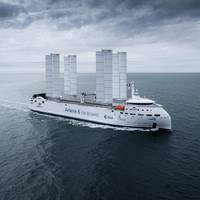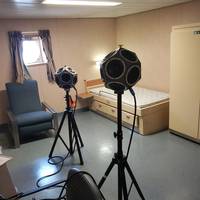The Problem with Reducing Underwater Radiated Noise

If the global commercial fleet reduced its speed by 10%, it would reduce underwater radiated noise by 40%, but nothing’s ever that simple.The main thing holding the shipping industry back from reducing its underwater radiated noise (URN) is not a lack of appropriate technology. It’s argued that many of the technologies being implemented today to reduce fuel consumption also reduce noise. So, the noise reductions could essentially come at no net cost to the shipowner, but there’s a lack of regulation and a lack of targeted incentives…
Hanwha Ocean's LCO2 Carrier Tank and Noise Measurement Get DNV Nod

DNV has awarded Hanwha Ocean an Approval in Principle (AiP) and an Approval of Service Suppliers (AOSS) for two innovations: a large-scale liquefied carbon dioxide (LCO2) carrier tank and an underwater radiated noise (URN) measurement.DNV’s AiP relates to the design of a cargo hold of a 70,000 cbm LCO2 carrier, integrating Hanwha Ocean's patented Bi-Lobe cargo hold, a vertical asymmetric structure that maximizes cargo capacity. The concept specifically incorporates LNG propulsion engines and allows sufficient space for installing shipboard carbon dioxide capture and storage systems…
IMO Targets Subsea Ship Noise with New Draft Guidelines

Draft revised Guidelines for the reduction of underwater noise from commercial shipping to address adverse impacts on marine life have been agreed by the IMO Sub-Committee on Ship Design and Construction (SDC 9), which met January 23-27, 2023.The draft guidelines recognize that commercial shipping is one of the main contributors to underwater radiated noise (URN) which has adverse effects on critical life functions for a wide range of marine life, including marine mammals, fish and invertebrate species…
A BC Ferries Case Study: Lessons Learned in Setting Underwater Radiated Noise Targets

In a typical year, the waters surrounding British Columbia’s Port of Vancouver host approximately 3,000 deep sea commercial vessels and 19 of the 35 ferries operated by BC Ferries, one of the largest ferry operators in the world. These waters are also home to a wide variety of aquatic wildlife, including the southern resident killer whales (SRKW), which have been listed as endangered in Canada since 2003.With vessel-generated acoustic disturbances identified by Fisheries and Oceans Canada as one of four key threats to the SRKW…
ENGINEERING: Inter-Compartment Sound Transmission Regulations and Testing

Complying with International Maritime Organization Resolution MSC.337(91) Noise Level CodeOne of the best things a marine operator can do for its crew or passengers is prioritize their comfort by reducing shipboard noise. Commercial and military marine vessels can be subject to very high noise levels produced by everything from onboard activities to aircraft. At worst, this noise can be hazardous—disruptively noisy environments can lead to discomfort, sleep-deprivation, and even hearing loss, which can in turn lead to lower job performance, safety risks, and diminished quality of life.





